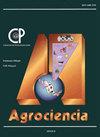促进三种龙舌兰间接体细胞胚胎发生的化合物的作用
IF 0.5
4区 农林科学
Q4 AGRICULTURE, MULTIDISCIPLINARY
引用次数: 0
摘要
龙舌兰属是墨西哥最大和最广泛使用的植物之一,主要用于生产酒精饮料。该属物种的特点是它们的生命周期长,有性繁殖有限,这使它们处于危险之中,要求寻找一种可以大量繁殖和保护这些物种的替代方法。体细胞胚胎发生(Somatic embryogenesis, ES)正在成为解决这一问题的解决方案,尽管这是一个复杂的过程,取决于大量因素和物种特异性方案的发展。渗透胁迫是这些因素之一,它可以通过应用化合物如聚乙二醇(PEG)或脱落酸(ABA)来促进体细胞胚胎的形成和成熟。迄今为止,尚未见渗透胁迫对龙舌兰体细胞胚胎发生影响的研究报道。本文研究了其对龙舌兰(Agave angustifolia)、铜龙舌兰(a.a cupreata)和蜥蜴龙舌兰(a.a salmiana)体细胞胚胎表达和成熟的影响。用两种浓度的ABA(3和9 mg L-1)和两种浓度的PEG(50和70 g L-1)对胚合子轴愈伤组织的形成进行了研究。9 mg L-1 ABA和50 g L-1 PEG处理均有利于三种植物体细胞胚的形成,而70 g L-1 PEG处理则获得了刺叶麻体细胞胚。体胚的形成是不同步的,尤其是铜柳。用体细胞胚再生的方法获得了刺叶、铜叶和salmiana的幼苗。本文章由计算机程序翻译,如有差异,请以英文原文为准。
EFFECT OF PROMOTING COMPOUNDS OF INDIRECT SOMATIC EMBRYOGENESIS IN THREE Agave SPECIES
The Agave genus is one of the largest and most widely used in Mexico, mainly for the production of alcoholic beverages. The species in this genus are characterized by their long-life cycles and limited sexual reproduction, which endangers them and demands the search for an alternative that allows mass multiplication and preservation of these species. Somatic embryogenesis (ES) is emerging as a solution to solve this problem, although it is a complex process that depends on a large number of factors and the development of species-specific protocols. Osmotic stress is one of these factors, a condition that can promote the formation and maturation of somatic embryos through the application of compounds such as polyethylene glycol (PEG) or abscisic acid (ABA). So far, no studies have been reported on the effect of osmotic stress on somatic embryogenesis in Agave species. In this work we evaluated its effect on the expression and maturation of somatic embryos in Agave angustifolia, A. cupreata and A. salmiana. Its formation was determined using two concentrations of ABA (3 and 9 mg L-1) and two concentrations of PEG (50 and 70 g L-1) in callus obtained from embryonic zygotic axes. Treatments with 9 mg L-1 ABA and 50 g L-1 PEG favored the formation of somatic embryos in the three species evaluated, in addition to the treatment with 70 g L-1 PEG, with which A. angustifolia was obtained. Somatic embryo formation was asynchronous, especially for A. cupreata. Seedling regeneration from somatic embryos was achieved in A. angustifolia, A. cupreata and A. salmiana.
求助全文
通过发布文献求助,成功后即可免费获取论文全文。
去求助
来源期刊

Agrociencia
农林科学-农业综合
CiteScore
0.50
自引率
33.30%
发文量
51
审稿时长
18-36 weeks
期刊介绍:
AGROCIENCIA is a scientific journal created and sponsored by the Colegio de Postgraduados. Its main objective is the publication and diffusion of agricultural, animal and forestry sciences research results from mexican and foreign scientists. All contributions are peer reviewed. Starting in the year 2000, AGROCIENCIA became a bimonthly and fully bilingual journal (Spanish and English versions in the same issue). Since 2007 appears every month and a half (eight issues per year). In addition to the printed issues, the full content is available in electronic format.
 求助内容:
求助内容: 应助结果提醒方式:
应助结果提醒方式:


